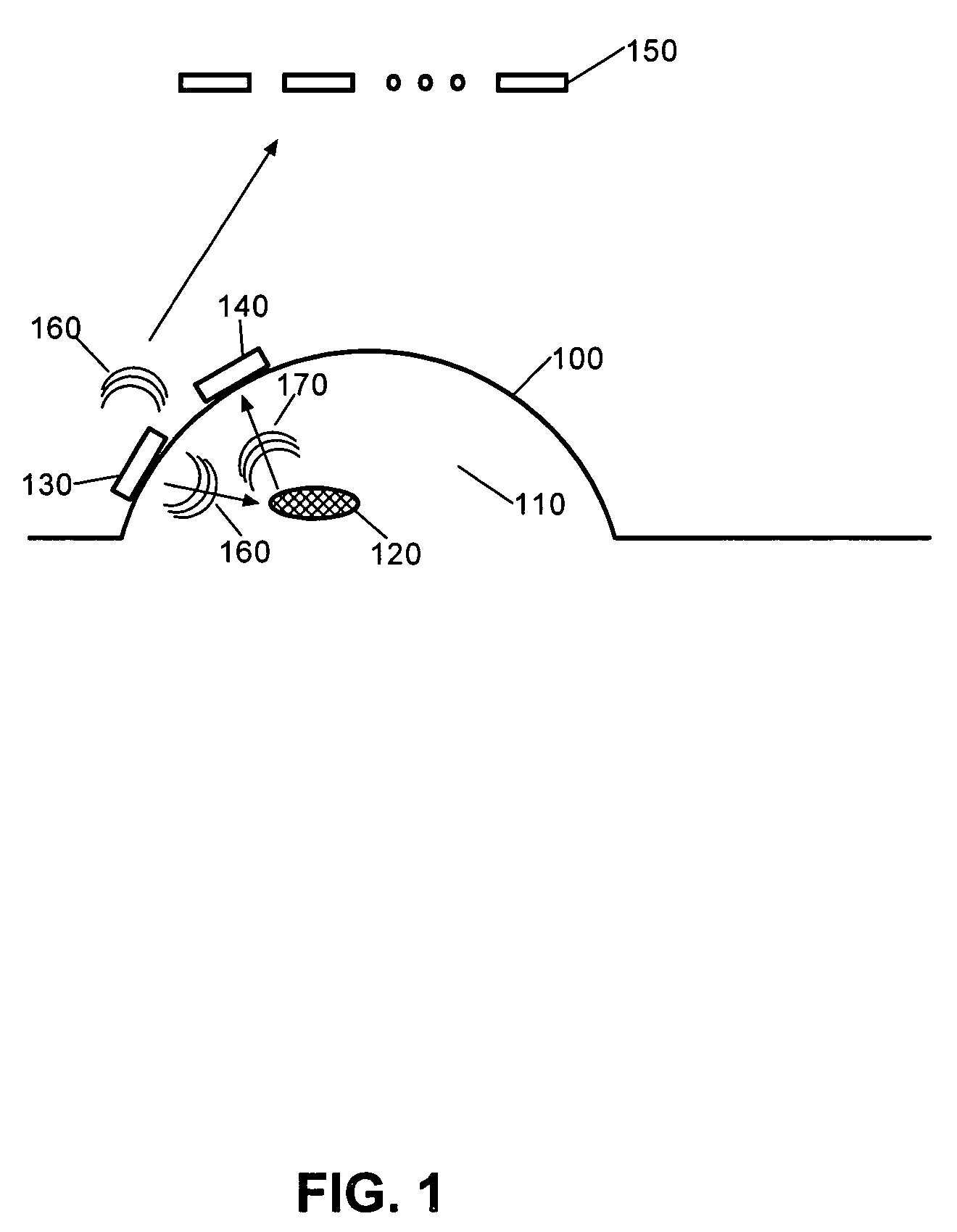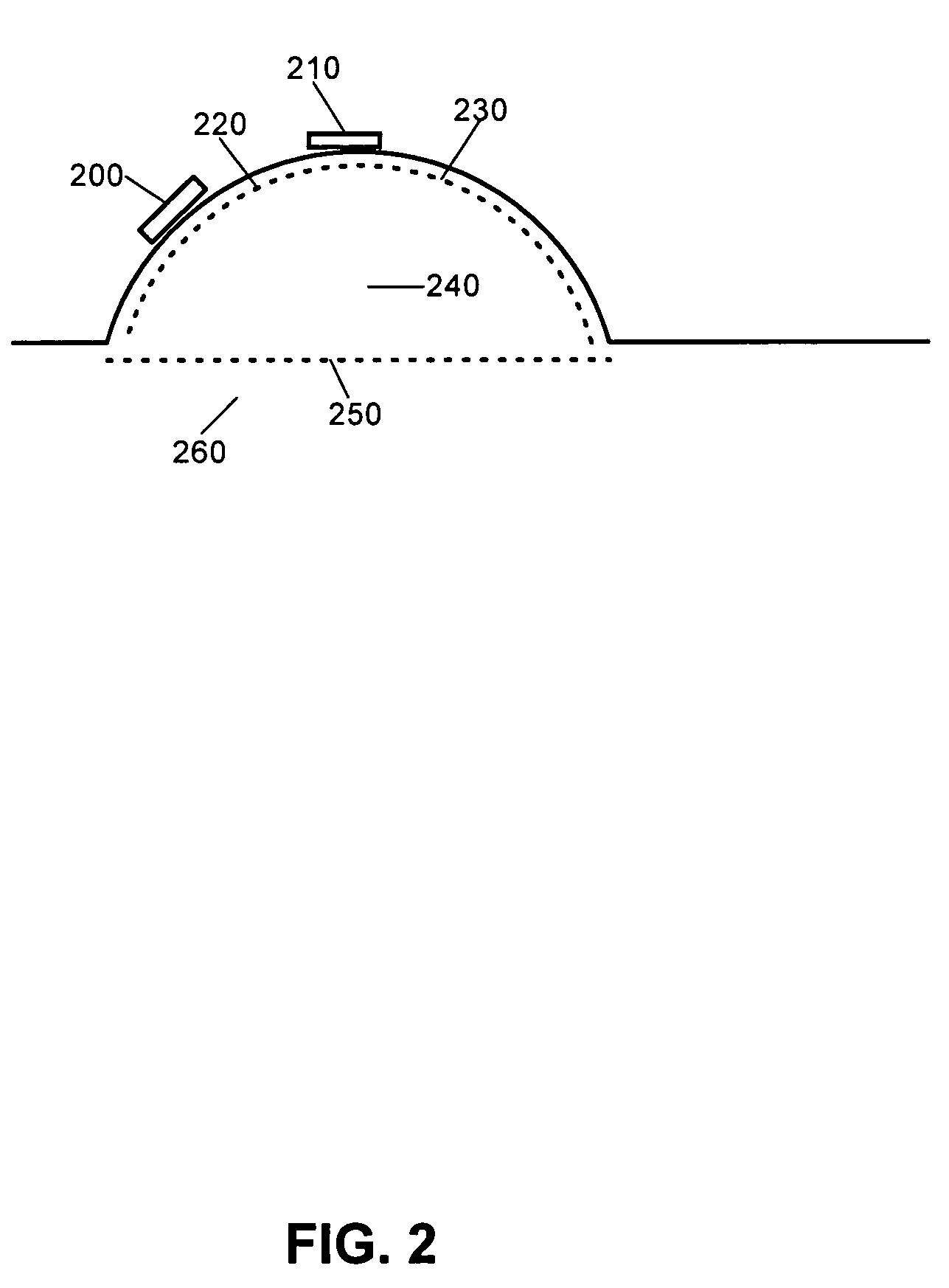Breast cancer detection system
a breast cancer and detection system technology, applied in the field of medical diagnostic imaging, can solve the problems of reducing the accuracy of conventional breast cancer screening methods, affecting so as to avoid unnecessary generic models, improve the accuracy and overcome the deficiency of conventional confocal microwave imaging.
- Summary
- Abstract
- Description
- Claims
- Application Information
AI Technical Summary
Benefits of technology
Problems solved by technology
Method used
Image
Examples
Embodiment Construction
[0023]The present invention provides a microwave imaging process and system for use in breast cancer detection. The process can include the steps of transmitting microwave energy from a first probing antenna at the surface of the breast inwardly through the breast tissue, receiving at a second probing antenna at the surface of the breast reflected ones of the transmitted microwave energy which had been reflected by a tumor disposed in the breast tissue, and further receiving in an array of fixed position antennae emissions from said transmitted microwave energy. The position of the probing antennae can be computed based upon position location techniques applied to the time of receipt of the emissions. Based upon computed position, an image of the tumor in the breast tissue can be formed.
[0024]Importantly, clutter reduction can be applied to the formation of the image of the tumor so as to reduce the effect of microwave energy reflected not by the tumor, but by the boundaries between...
PUM
 Login to View More
Login to View More Abstract
Description
Claims
Application Information
 Login to View More
Login to View More - R&D
- Intellectual Property
- Life Sciences
- Materials
- Tech Scout
- Unparalleled Data Quality
- Higher Quality Content
- 60% Fewer Hallucinations
Browse by: Latest US Patents, China's latest patents, Technical Efficacy Thesaurus, Application Domain, Technology Topic, Popular Technical Reports.
© 2025 PatSnap. All rights reserved.Legal|Privacy policy|Modern Slavery Act Transparency Statement|Sitemap|About US| Contact US: help@patsnap.com



